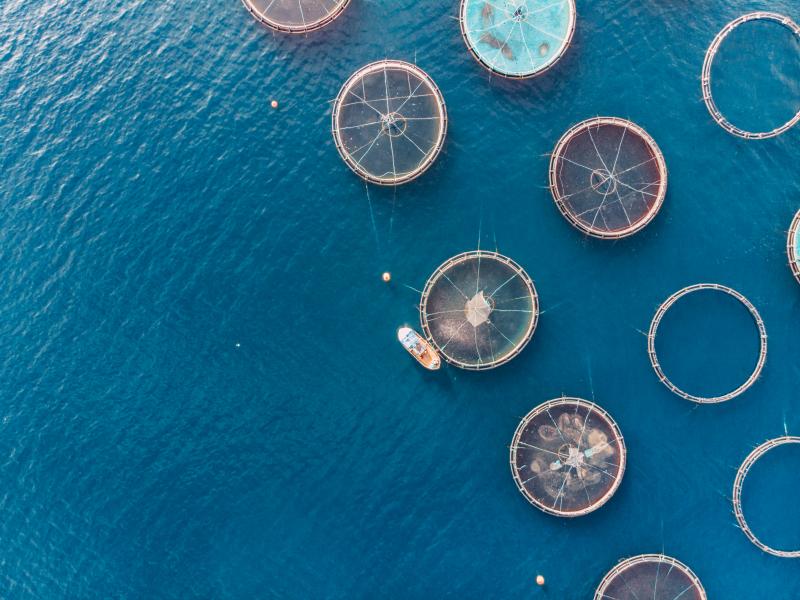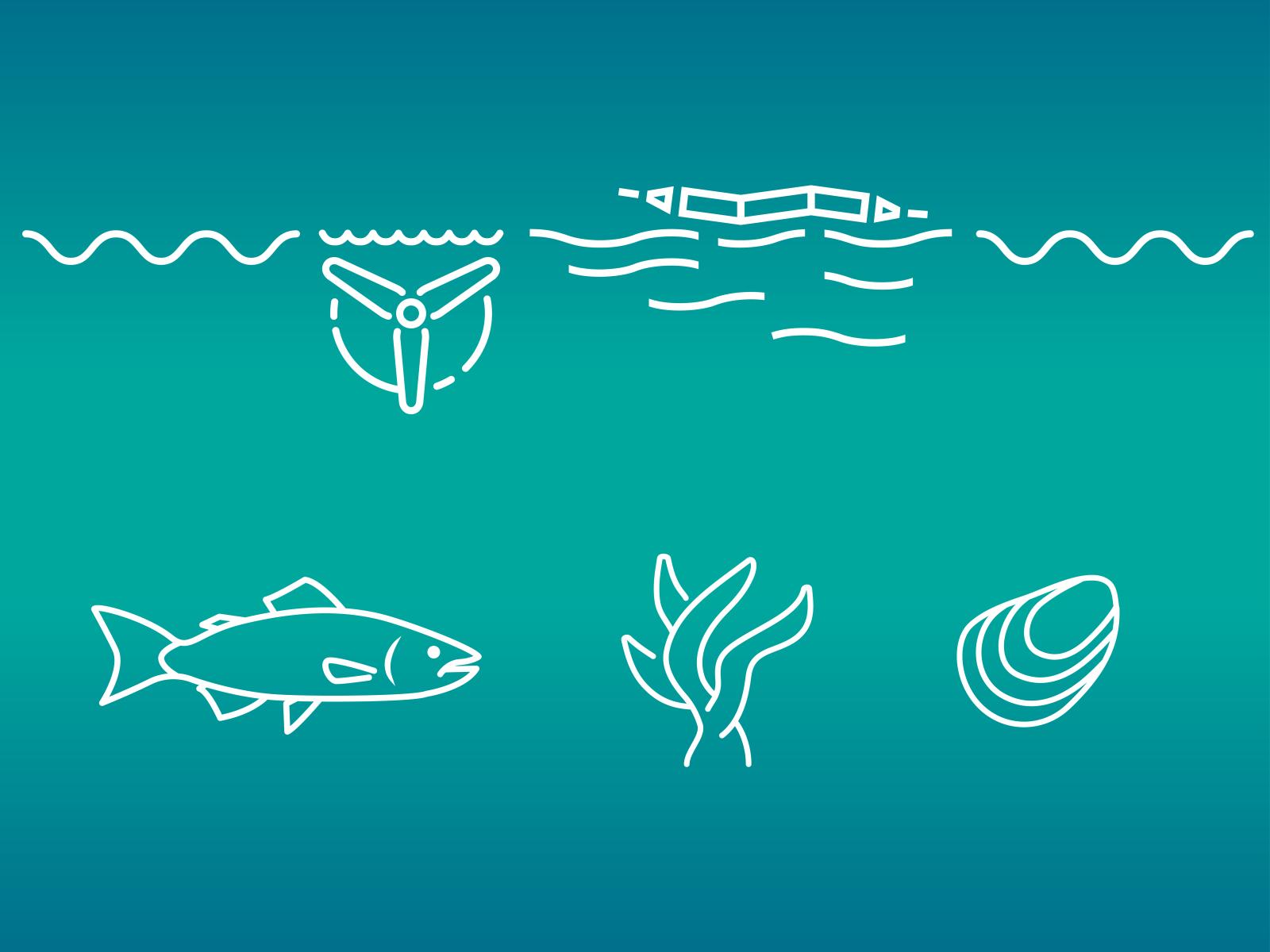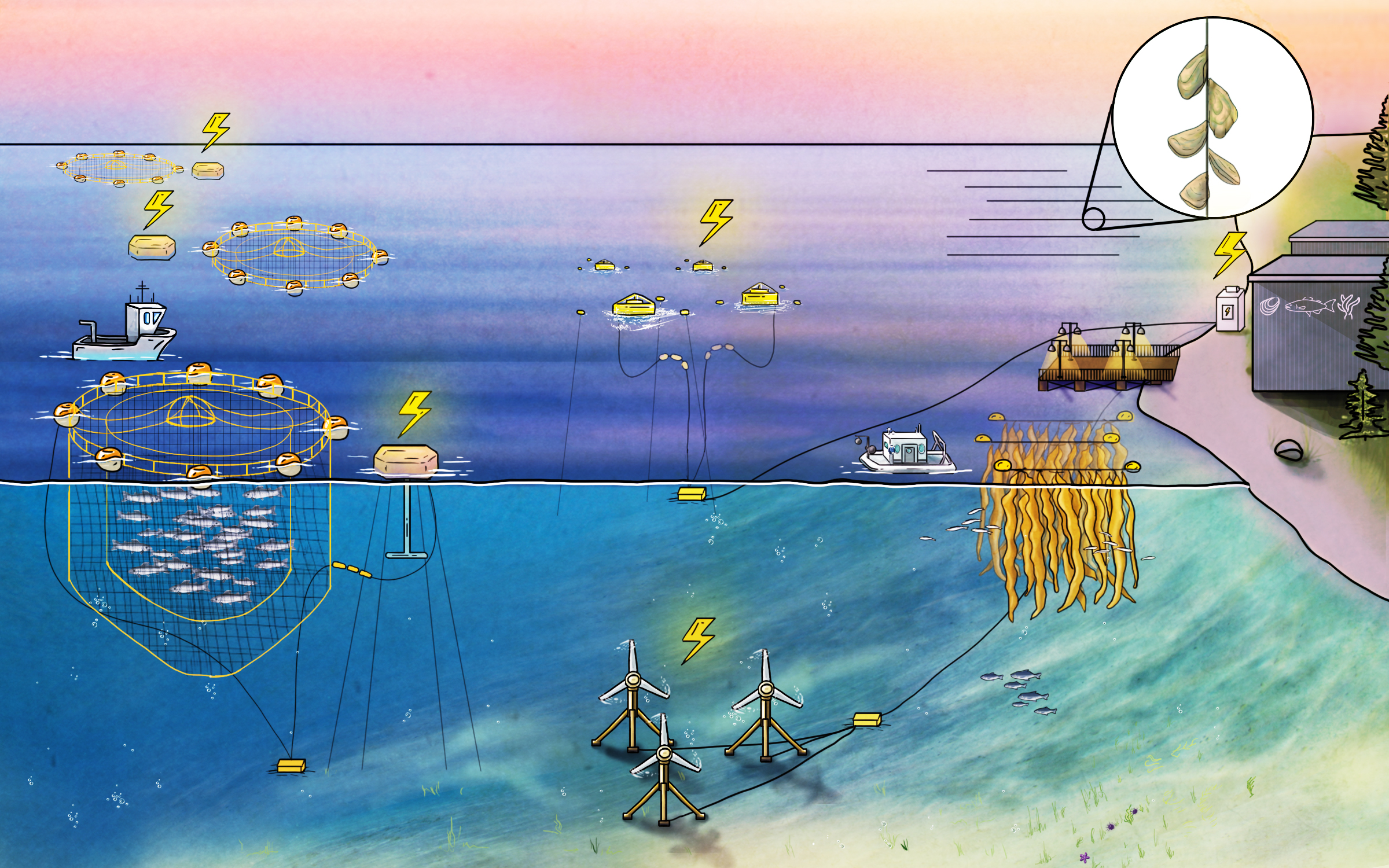
Marine Energy for Aquaculture
Exploring ways to power sustainable aquaculture with marine energy

Graphic by Stephanie King | Pacific Northwest National Laboratory)
Exploring ways to power sustainable aquaculture with marine energy

Graphic by Stephanie King | Pacific Northwest National Laboratory)
Aquaculture—the cultivation and harvest of fish, shellfish, and aquatic plants—is a growing industry worldwide. Fortunately, marine aquaculture developments are based on a massive potential source of renewable energy—the ocean. Derived directly from the movement of waves, tides, and ocean currents, and even temperature and salinity gradients, marine energy could power aquaculture developments nearshore and out at sea. It’s an approach that could enable industry decarbonization and support more sustainable aquaculture.
Called co-location, this approach is part of a growing tactic in marine spatial planning that purposefully combines compatible uses in space or on shared ocean infrastructure for efficiency and sustainability—in this case, pairing marine energy devices with aquaculture developments. Through co-location, marine energy would supply aquaculture operations with reliable, renewable power, while aquaculture developments would provide the marine energy industry with an application space to drive further development and growth.
With this potential in mind, researchers at Pacific Northwest National Laboratory (PNNL) are studying examples of marine energy and aquaculture co-location efforts to inform future growth. In a 2022 report for Ocean Energy Systems (OES), PNNL researchers and their collaborators provided the first comprehensive look worldwide into the potential for marine energy integration in offshore aquaculture. The researchers outlined specific energy needs of different aquaculture industries, economic considerations, regulatory processes, and technical challenges facing integration of marine energy with aquaculture. Studying co-location projects globally, they identified specific opportunities and challenges to co-location, providing valuable insight and recommendations in this emerging space.
